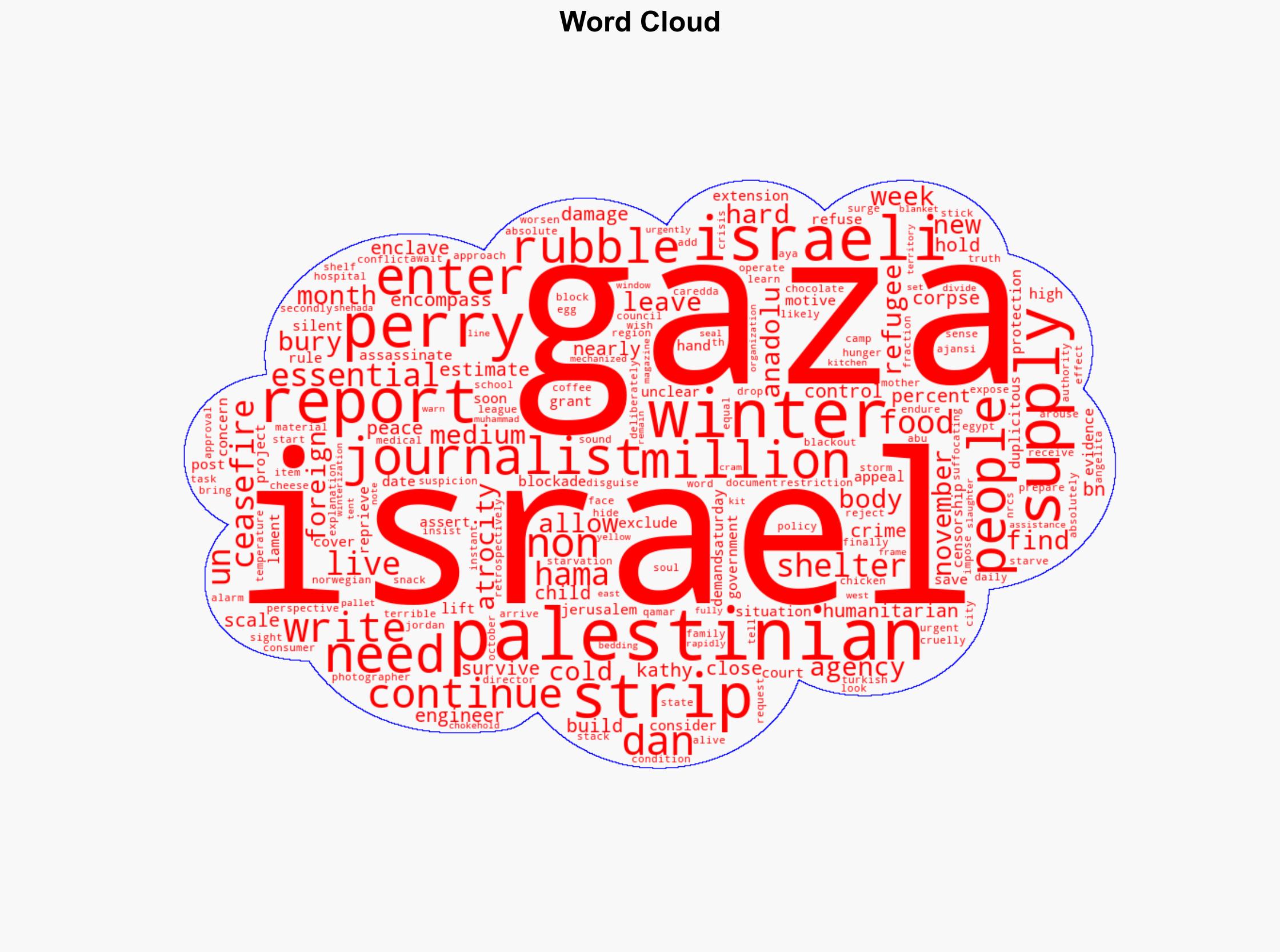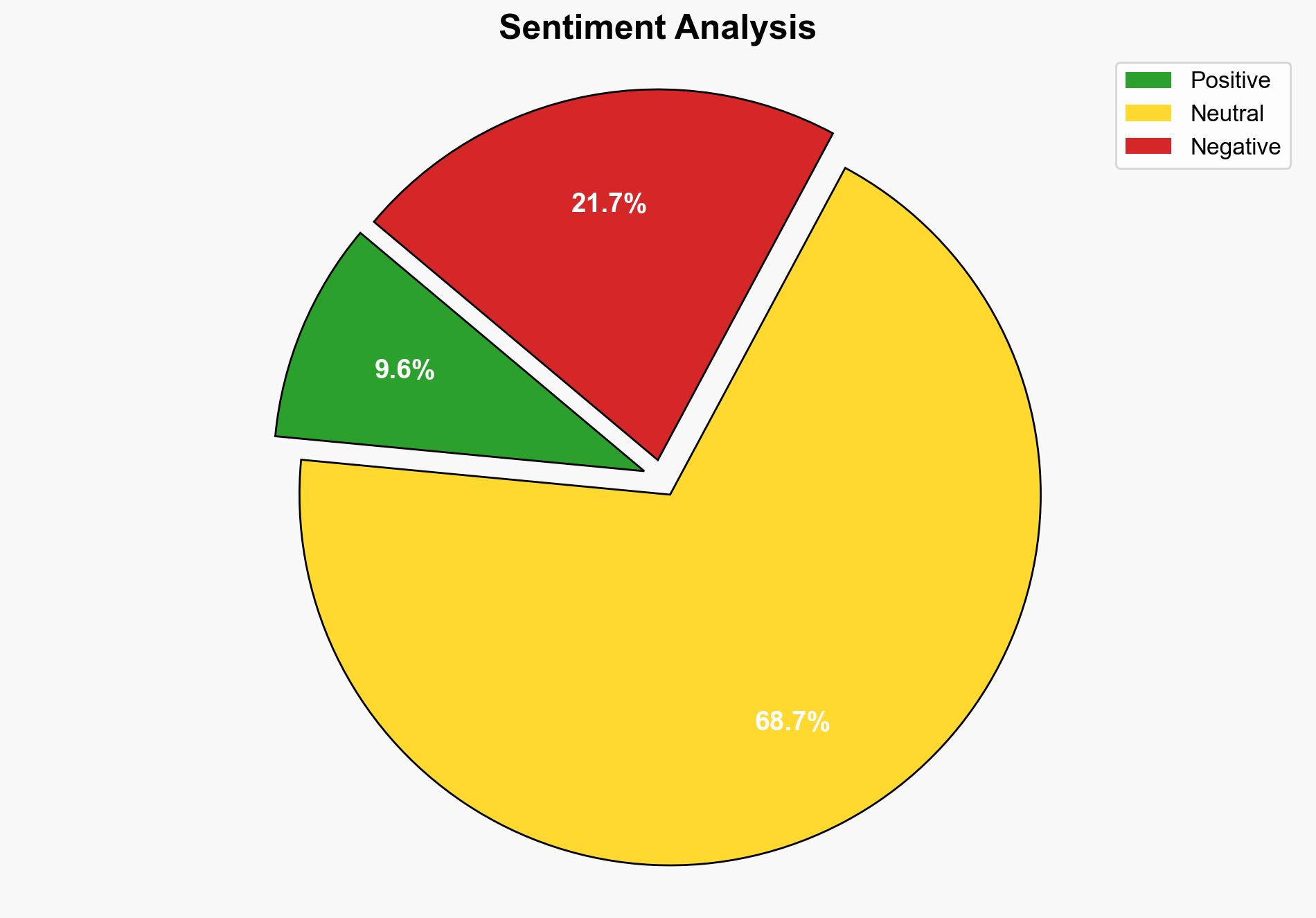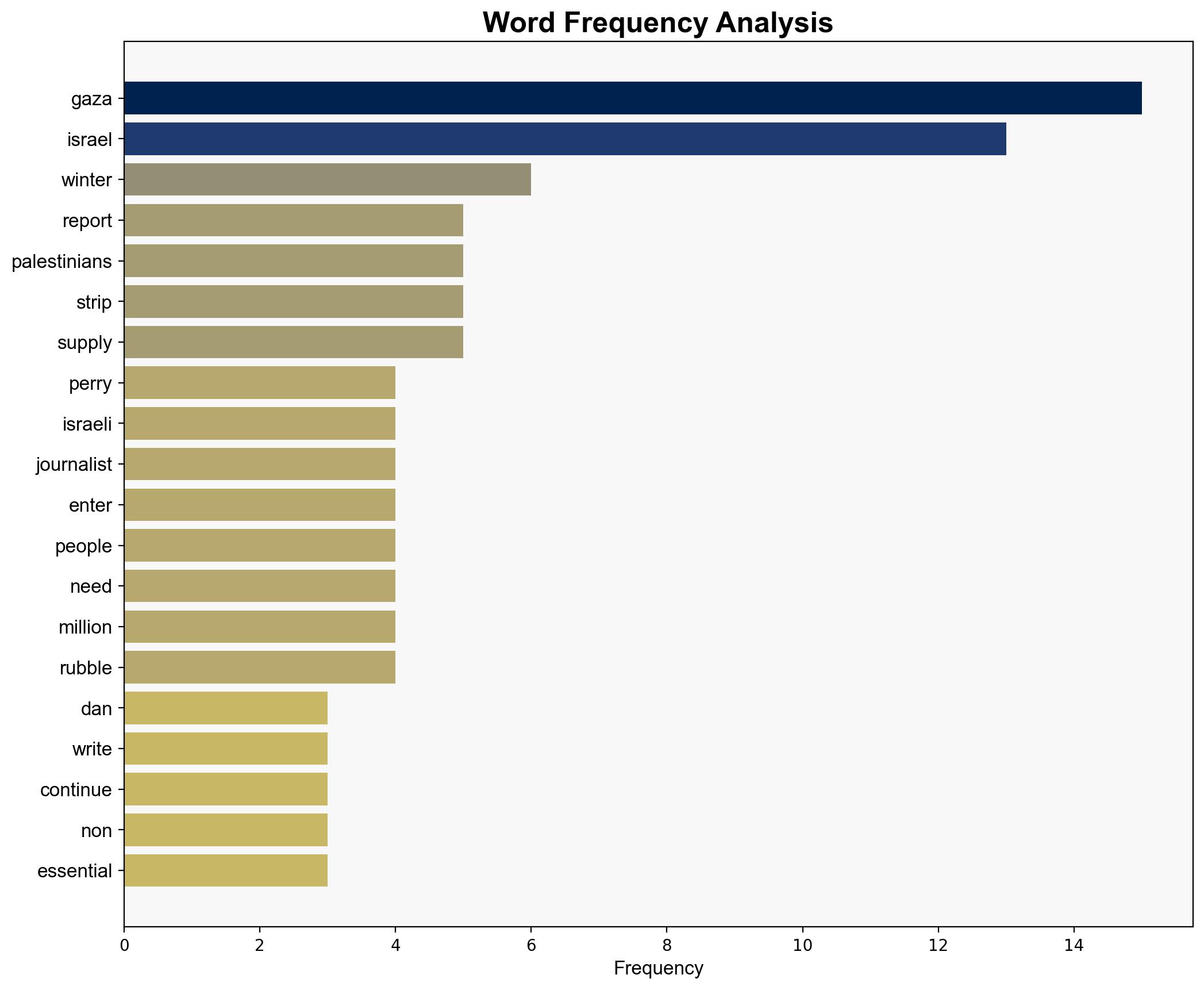Winter in Gaza – Antiwar.com
Published on: 2025-11-12
AI-powered OSINT brief from verified open sources. Automated NLP signal extraction with human verification. See our Methodology and Why WorldWideWatchers.
Intelligence Report: Winter in Gaza – Antiwar.com
1. BLUF (Bottom Line Up Front)
The most supported hypothesis is that Israel is intentionally restricting essential supplies to Gaza as a means of exerting pressure on Hamas, potentially exacerbating humanitarian conditions. Confidence Level: Moderate. Recommended action includes diplomatic engagement to ensure humanitarian aid reaches Gaza and monitoring for potential escalation in regional tensions.
2. Competing Hypotheses
Hypothesis 1: Israel is deliberately restricting essential goods to Gaza to pressure Hamas and weaken its control, while maintaining a facade of allowing non-essential goods to mitigate international criticism.
Hypothesis 2: The restrictions are primarily due to security concerns, with Israel aiming to prevent the smuggling of weapons and materials that could be used by Hamas, inadvertently causing a humanitarian crisis.
Hypothesis 1 is more likely given the evidence of selective allowance of non-essential goods and the reported strategic intent to weaken Hamas. However, Hypothesis 2 cannot be entirely dismissed due to Israel’s historical security concerns.
3. Key Assumptions and Red Flags
Assumptions: The reports of humanitarian conditions are accurate and not exaggerated for political purposes. Israel’s actions are primarily driven by strategic calculations rather than solely security concerns.
Red Flags: Potential bias in reporting from sources with vested interests. Lack of independent verification of conditions on the ground due to media restrictions.
Deception Indicators: Israel’s stated reasons for media restrictions may mask other strategic objectives. The portrayal of conditions might be manipulated by both sides to garner international sympathy or support.
4. Implications and Strategic Risks
The humanitarian crisis in Gaza could lead to increased regional instability, potentially drawing in international actors and escalating tensions between Israel and neighboring countries. The situation may also fuel anti-Israel sentiment and propaganda, potentially leading to cyber or terrorist activities targeting Israeli interests globally.
5. Recommendations and Outlook
- Engage in diplomatic efforts to facilitate the entry of humanitarian aid into Gaza, ensuring essential goods reach those in need.
- Monitor regional actors for signs of escalation or intervention, particularly from countries with vested interests in the Israeli-Palestinian conflict.
- Best-case scenario: Diplomatic efforts succeed, easing humanitarian conditions and reducing tensions.
- Worst-case scenario: Escalation leads to broader conflict involving regional powers, with significant humanitarian and geopolitical consequences.
- Most-likely scenario: Continued stalemate with periodic flare-ups of violence and ongoing humanitarian challenges.
6. Key Individuals and Entities
Dan Perry, journalist; Angelita Caredda, NRC regional director; Muhammad Shehada, journalist.
7. Thematic Tags
Counter-Terrorism, Humanitarian Crisis, Regional Stability, Israeli-Palestinian Conflict
Structured Analytic Techniques Applied
- ACH 2.0: Reconstruct likely threat actor intentions via hypothesis testing and structured refutation.
- Indicators Development: Track radicalization signals and propaganda patterns to anticipate operational planning.
- Narrative Pattern Analysis: Analyze spread/adaptation of ideological narratives for recruitment/incitement signals.
Explore more:
Counter-Terrorism Briefs ·
Daily Summary ·
Methodology





